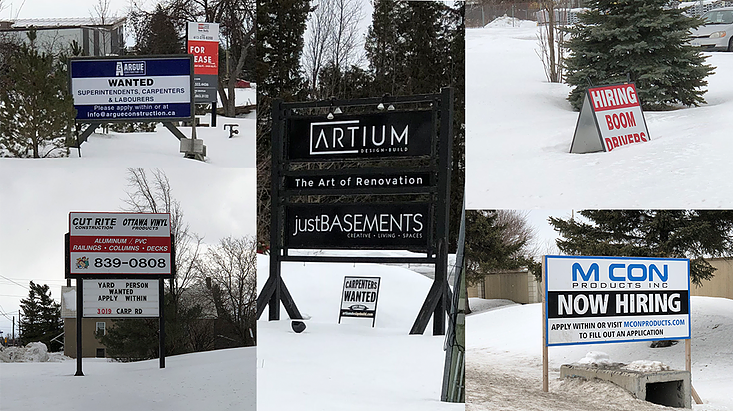It’s fair to say today’s businesses are operating in what feels like a golden age as far as technology goes. There is so much we can do. So many apps and tools and software that’s out there to help us streamline, simplify and scale everything from our daily to-do-lists to our company’s annual budget forecasts and reports.
BUT…
…that’s also a reason why some of that technology and some of those tools get lost in the pile. From our own background and experience we see this a lot when it comes to recruitment technology. Many companies don’t always take advantage of what’s out there. They don’t always look for solutions to make the whole process around recruitment and hiring easier, more efficient and producing better results. This is especially true when it comes to using an ATS. That’s corporate for Applicant Tracking System, and if you didn’t know that, you’re not alone. It seems a fair number of SME’s wouldn’t know what it stands for, let alone what it really means or what it can do for them.
On a recent project, we had the opportunity to visit the career pages of over 200 technology companies and we were surprised to learn how many of them did not use an ATS. And yet, these very same companies would be just as surprised to learn how much a good ATS would contribute to their own growth and success, and all for a fraction of what many start-ups would spend on weekly or monthly lunch buffets for their employees. So, we decided to help educate!
Now what exactly is an ATS?
Applicant Tracking Systems began simply as a way to keep track of candidates who applied for open jobs by organizing and storing their basic information in a database, much like how a CRM stores the information of sales prospects and leads. Over time, like CRMs, ATSs continued evolving to keep up with all the technological evolutions taking place across all areas of business, including recruitment and hiring. As competition in this space grew, better features and functionality were added to meet new and growing challenges within hiring, while simplifying and automating the process.
Today’s ATS platforms are modern-day recruitment management systems. They offer recruiting and hiring tools for companies to simplify all sorts of things like managing job postings to multiple job boards and websites; in-taking applications and organizing the application process; storing thousands of resumes for easy access and keyword searching; providing useful features to collaborate with colleagues on evaluating candidates; providing key analytics to help guide and improve the process; and most importantly, powering all of the communication around it. As far as individual features go, what you get depends on the software you choose, but the basic idea is that incorporating a really good ATS helps companies stay organized while running an efficient recruitment and hiring process so they can find the best people for the roles they want to fill.
How an ATS can improve your hiring results
On the surface, as is the case with most automation software, key benefits are usually anticipated from reducing the amount of work people need to do. Sure, an ATS can streamline many of the tasks normally handled by recruitment teams, resulting in a more efficient process. However, the biggest benefits stem from how an ATS allows for more efficient communication, collaboration, and organization, which ultimately plays out in a dramatic improvement to a candidate’s experience. It is only through delivering an outstanding candidate experience that the real magic happens.
Here’s how it works.
1. How an ATS can Improve Candidate Experience
A candidate’s experience is created through every step of your recruitment process. It begins from the moment they read your job advertisement, with each consecutive step taking the relationship a little further. There’s no one, single thing that defines it. Consistent job advertising, a mobile-friendly and simple-to-complete application process, easy access to all candidate information in one place, standard workflows for candidate evaluations and interviews, and the tools to facilitate consistent and timely communication with candidates throughout the entire process. All of these factors contribute to providing a great candidate experience.
When we take a look at the overall process, both your job advertisement and the application that follows is the first point of contact with any potential candidate. How simple, straightforward, and well-presented that process is sets the tone for the relationship. Too many employers fail to appreciate the importance of an applicant’s user-experience. If your job ad is poorly structured or fails to communicate what you’re really looking for in a candidate, or your online application process is messy and disorganized and hard to navigate, you may never even see the best candidates. In fact, the more qualified a job candidate is for a particular role, the more likely they will be to abandon the application process if it’s too long or complicated. An ATS will help you set-up a smooth online application process that can be reused across all of your open positions, and optimized to improve conversion results as needed.
An ATS helps to improve candidate communications as well. Once an applicant completes and submits their initial application, a series of pre-written, automated emails can be sent out, immediately improving your employer brand while helping you build relationships with good candidates before ever getting on a call with any of them. Just like a simple, user-friendly application process, the communication that follows only strengthens the positive impression your company gives candidates, making them more eager to accept an interview, consider a potential offer, or tell others in their professional network about their positive experience with your company.
What all of this ultimately gives you is the best chance that the best candidates will be attracted to your postings, apply, and remain engaged in your process through to the end.
2. How Candidate Experience can reduce Time-to-fill
Before we talk about Time-to-fill, let’s talk a little bit about Time-to-hire, which is the amount of time taken from the moment a candidate applies for a position, to the moment they accept an offer. In my opinion, Time-to-hire is the most important performance indicator in recruitment. An ATS helps to reduce Time-to-hire through improved communication, collaboration, and organization. This allows successful candidates to move more quickly and efficiently from screening to interviewing to offer.
If a solid job description and application process get the best candidates in the door, then great communication and an efficient process are what keep them from being distracted by other opportunities, or deciding to stay in their current job.
In the end, this reduction in Time-to-hire and its contribution to keeping the best candidates engaged, has a huge impact on your company’s average Time-to-fill – a measure of the total time a specific position remains unfilled, and ultimately what should matter most. At best, when your most desired candidates leave late in the process, you’ll need to wait until others come through initial screening and interviewing, which will set you back. At worst, you may need to go right back to the well, and source new candidates, which will set you back even further.
Keeping your best candidates happy and engaged in the process is critical to reducing Time-to-fill, and a good ATS plays a big role in that. Why is that important? Because the faster someone joins your team, gets trained and starts contributing – without the need for any “external” help to make it happen – the better it is for any company’s bottom line. Which brings us to cost-per-hire.
3. How Candidate Experience can reduce Cost-per-hire
A company looking to reduce their average Cost-per-hire may see the cost of an ATS as an added and unnecessary expense. However, they may be missing the bigger picture.
That’s because the greatest line-item impact on hiring expenses occurs when your own internal recruitment and hiring process fails to fill a position in a timely manner. The result? Companies panic and react by looking to contingency recruitment agencies to fill the void. In turn, they could end up paying as much as 15-20% of a new hire’s first-year compensation – or roughly four to six times the average Cost-per-hire across North-American corporate recruiting teams.
That, in itself should satisfy your CFO. However, the CEO will tell you that far and away the biggest impact to not hiring the right person in a timely manner, is that the company won’t achieve its growth objectives. For an early-stage company, that’s really the only thing that matters.
By going back to the fundamentals and focusing on candidate experience, an effective ATS is one of the best tech investments a growing company can implement to keep the best candidates in the process, get the best people on board, and meet your business objectives.
BEYOND RECRUITING…
Better candidate experience, reduced hiring time and reduced hiring costs – along with all of the smaller benefits that extend as a result – provide immeasurable value to a company’s recruitment and hiring strategy. Above all else, what these metrics really reveal is whether your company’s overall hiring process is working or not. Recruitment and hiring have evolved tremendously over the last couple of decades and will continue to do so over the next couple of decades. With the growing emergence of AI taking shape in so many aspects of our personal and professional lives, there’s no telling how far Applicant Tracking Systems will go in leveraging these new advancements in technology.
But for now, what we do know is that today’s ATSs provide all the tools a growing company needs to help ensure you’re attracting and engaging the best candidates on your way to selecting the RIGHT ones. As a result, the impression you’ll be making through this powerful piece of software will help you create a positive experience around your employer brand that will extend far beyond your company’s recruitment efforts!







